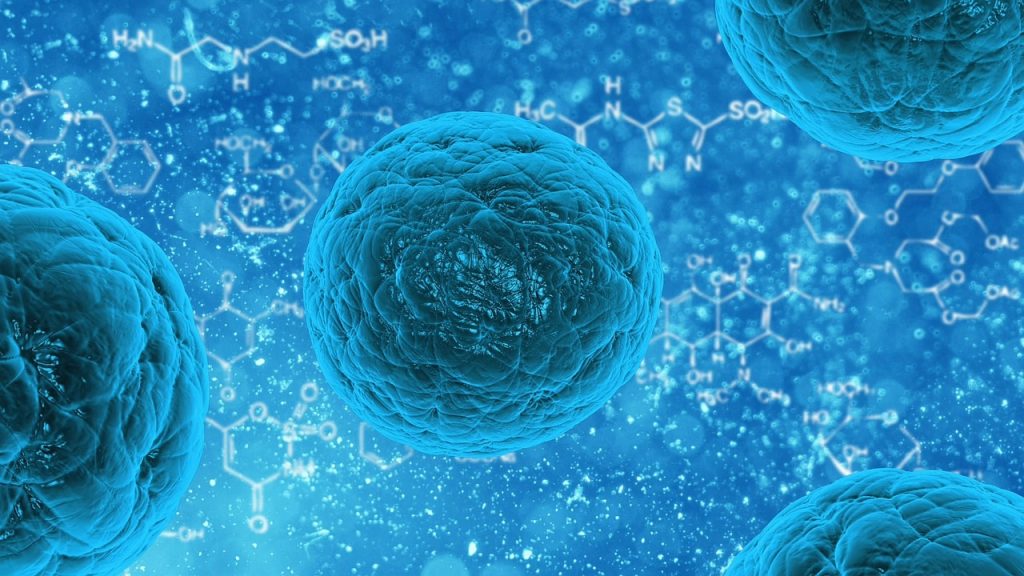Data is ubiquitous in ヘルスケア—from hospitals, laboratories and リサーチ centres to surveillance systems, data makes up an indiscriminate part of healthcare systems. In fact, there is a myriad of types of data in biosciences research collected through clinical research or generated by genome sequencing or computational drug modelling. 癌研究 in particular benefits from the applications of big data and analytics. Cancer screening programs initiate rich repertoires of imaging and laboratory data, which require in-depth analysis and repeated testing in order for real value to be derived from it. Repeated testing and データ分析 enable clinical researchers to develop better drugs, understand their attributes in vivo と、がん治療のための新しい薬の種類を生み出すことができます。
It’s no secret that ビッグデータ は、複雑ながんを打破するための確実な方法と考えられています。 がんを治療するための新しいメカニズムを確立することが求められているため、企業はデータの可視化/分析ツールを検討しています。癌細胞からデータを収集し、蓄積し、分析することは、全く新しいゲームです。 善意のAI, 10X ゲノミクス, インシリコ医療 そして νMedii は、最初のマイルストーンを達成しました。 In fact, 10X Genomics has gone the extra mile to provide whole genome sequencing, exome sequencing and single cell transcriptome analysis services that vividly indicate cancer-prone gene sequences in the DNA, mRNA and polypeptide chains, respectively. Few others are utilizing broader data frameworks, novel screening mechanisms and high definition data filtering algorithms to test cancer drugs on a wide range of cellular environments.
Big data’s applicability in cancer diagnosis, experimentation and management is being hailed as the vital step towards next-level cancer research. Here are 7 ways big data is impacting cancer research.
1.ヒトのがんゲノム配列決定
私たちの体を構成するすべての細胞は、同じ数の染色体と、ほぼ同じ量のDNAを持っています。しかし、がん細胞では、染色体の内容や成長にはっきりとした異常が見られます。これをインシリコで可視化すれば、DNAレベルまでの情報を利用することができます。このようなシーケンス研究は、細胞生物学者、バイオインフォマティシャン、分子生物学者、ナノバイオ技術者が、染色体異常を除去するより良い方法を開発するのに役立ち、それが可能な治療ルートにつながるのです。
2.患者サンプルのハイスループット・シーケンス
We’re in the age when personalized medicine is becoming commonplace in healthcare and cancer is the biggest scope for that progress. This push towards personalized medicine has put the onus on computational biology, the branch of biology that makes healthcare as sophisticated as it is viewed today. オリビエ・エレメント教授, a Computational Medicine expert at the Cornell University highlights that as cancer cells are always changing, evolving and adapting to human environments, quicker next-generation technologies are more necessary now than ever to uncover a tumour’s genetic makeup. And the effort doesn’t just end there, mutation sequences have to be identified, segmented and processed with regards to the gene expressed.
3.他の生物のゲノム配列の決定
最初に塩基配列が決定されたのは エシェリヒア・コリは、単細胞生物である。その後、植物のゲノムのような シロイヌナズナ and non-vertebrate worms, reptiles and rodents were sequenced, With every degree of complexity that these organisms carried, genome sequencing gained bigger in terms of the understanding of a single cell’s potential to control, sensitize or ward off cancerous cells. It also presented working theories behind triggers of cancer. Now, researchers are analysing real-time data from mouse/chicken hamster ovary cancer cell lines to augment or improve cancer detection methods, along with increasing the accuracies of presently available screening tests.
4.トランスクリプトーム解析による癌の監視強化
ここ10年の間に、がん関連の研究においてのみ、スクリーニングデータや実験データの大規模なデータベースが生成されました。このことは、現在、癌遺伝子のモニタリング、創薬、生体適合性研究のための最初のツールとなっているマーカー遺伝子の維持に重要な価値をもたらしています。さらに、一部の企業は、がんゲノムデータを外挿して、トランスクリプトームやタンパク質合成を分析しています。これは、誤って配置された遺伝子断片とその生成物を見つけるための鍵であり、保存的および非保存的な突然変異を追跡するのに役立ちます。
5.診断モデリングのための機械学習アルゴリズムの導入
医療システムには膨大な量のデータが蓄積されていますが、現代の技術ではその活用が容易になっています。バイオテクノロジー/学際的な研究者は、これらのデータベースの膨大な分析を、高速な 機械学習アルゴリズム データをスキャンし、データと対話し、大規模なデータベースの統合において最高の精度を確保することができるシステムです。機械学習アルゴリズムとハイテクデータモデリングシステムは、腫瘍の全体像を把握するために、さまざまなソースからのがん関連データを統合するために採用されています。遺伝子データの可視化ツールは、がん細胞の成長と健康な細胞の死をチェックする新しい方法を可能にすることで、がん検出に波紋を広げています。これは、ハイスループットのシーケンシングおよびスクリーニングデータを可視化するための最も効率的なオープンソースの研究データ管理システムであるGenetic Modification and Clinical Research Information Systemを取り入れることで効果的に利用されています。
6.病気の予後をより明確にするために
のような医療データ可視化ソフトウェアツールもあります。 CancerLinQ have been developed, which enable physicians and interventionalists to get access to high-quality patient medical data. This is important because it helps understand previous cancer incidences, the progression of the disease and the previous treatment regimen. Doctors are referring to protected medical data of patients using screening tools and using it to recommend 臨床試験, suggest personalized treatment protocols and decide the scope of cancer management more effectively. Nowadays, hospitals that report high admission rates for cancer patients have also started using 腫瘍のIDカード そのデータを集中的にアクセスして臨床評価することができます。
7.がんの再燃に対する有効な答えを示す臨床データもある
More and more healthcare providers are turning to data analytics tools to understand the reasons why some patients show relapsing tumours while others don’t. Doctors are evaluating large numbers of case reports that help assess patient health risks in a much wider perspective than before. While medical case reports have been in use for a long time, it’s only now that their accessibility and utility have been rising. This means laboratory data are not subjected to standard identification processes but assessed after comparing with other globally reported cases. This makes data the key requirement for personalized treatment.
Cancer is evolving at higher rates than our medicines. Hence, if you’re aiming to defeat, control or prevent it, it’s imperative to channelize the efforts with better target recognition. Big data is that pivotal technology a cancer scientist should apply to improve the quality of research and establish the best results quicker.
_______________________________________
を相談する。 がん研究の専門家トやフリーランス データサイエンティスト をKolabtreeに掲載しました。
